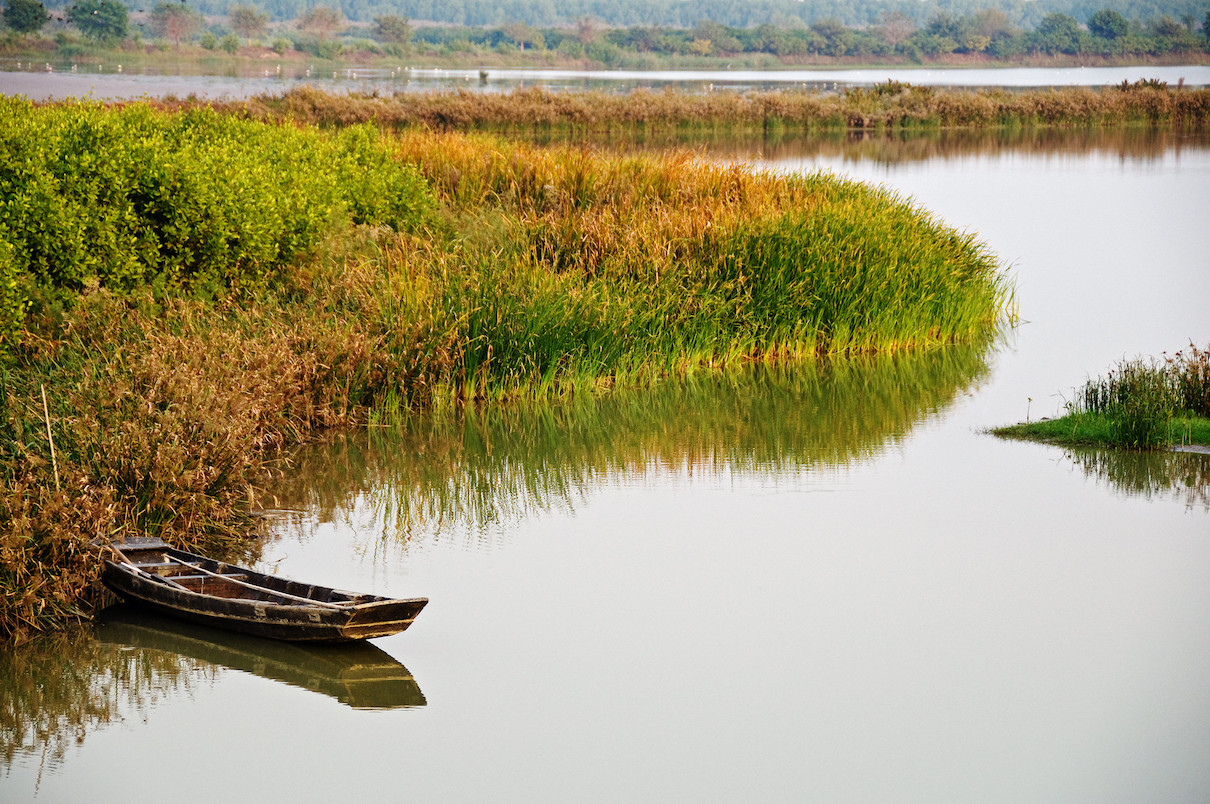Study shows ‘encouraging’ results of China’s bid to protect coastal wetlands
Nov 5, 2021
- China’s coastal wetlands experienced a significant recovery in recent years after many decades of loss and destruction, a new study suggests.
- Satellite imagery shows that different kinds of coastal wetlands deteriorated between 1984 and 2011, but began to improve from about 2012.
- The degradation of China’s coastal wetlands is largely attributed to land reclamation, construction and other economic activities, the study suggests.
- But the nation has recently recognized the importance of coastal wetlands, and initiated several projects aiming to restore and conserve these ecosystems.
A new study has found that China’s coastal wetlands have undergone significant recovery within the last 10 years after several decades of loss and destruction.
An international team of researchers used satellite imagery to develop a series of maps that illustrated the changes that took place in three kinds of coastal wetland regions — tidal flats, salt marshes and mangroves — between 1984 and 2018. In the study published this week in Nature Sustainability, they reported finding that coastal wetland areas decreased between 1984 and 2011, but started to rebound after 2012.
While other studies have reported on the loss and degradation of China’s coastal wetlands at regional or local levels, this is one of the first that uses satellite imagery to analyze wetland changes at a national level, says lead author Xiangming Xiao of the University of Oklahoma.
Xiao said the changes shown to occur to coastal wetlands at this level came as a surprise.
“It’s encouraging that we start to see some improvement in coastal wetlands,” Xiao told Mongabay in a phone interview. “It’s demonstrated that there is still hope … for the conservation and restoration [of China’s wetlands].”

Coastal wetlands are considered to be vital ecosystems that help protect coastlines from storms and flooding, boast an abundance of plant and animal species, and even sequester carbon. Yet wetlands are one of the least protected ecosystems in the world. According to a 2018 report released by the Ramsar Convention, an intergovernmental treaty that provides a framework for wetlands conservation, 35% of the world’s wetlands were lost between 1970 and 2015, with the rate of loss accelerating from 2000 onward.
In China, the loss of coastal wetlands corresponded with the boom in economic development and the nation’s 1978 trade agreement, referred to as the “open door policy,” which helped China increase its foreign trade opportunities, Xiao said. In the early 1980s, China’s coastal zone began to feel the effects of this economic boom as wetlands were reclaimed and built upon, the study suggests.
According to a paper in Science, China lost about 50% of its coastal wetlands between 1950 and 2000 due to land reclamation.
But from the 1990s, China began to recognize the importance of its coastal wetlands, and rolled out a number of projects focused on restoring and conserving them, according to the paper. For example, in 2017, China launched the National Coastal Shelterbelt System Construction Project Plan that aims to restore 48,650 hectares (120,200 acres) of mangrove forests in China by 2025.
Xiao said that while China still has a “long way to go” to restore and protect its entire coastal wetland region, he said his study provides a glimmer of hope.
“There’s a lot of bad news [out there],” Xiao said, “but [we] need good news to inspire us.”
Citations:
Ma, Z., Melville, D. S., Liu, J., Chen, Y., Yang, H., Ren, W., … Li, B. (2014). Rethinking China’s new Great Wall. Science, 346(6212), 912-914. doi:10.1126/science.1257258
Wang, X., Xiao, X., Xu, X., Zou, Z., Chen, B., Qin, Y., … Li, B. (2021). Rebound in China’s coastal wetlands following conservation and restoration. Nature Sustainability. doi:10.1038/s41893-021-00793-5
Banner image caption: A wetland in China. Image by Ross Geller from Pixabay.
Elizabeth Claire Alberts is a staff writer for Mongabay. Follow her on Twitter @ECAlberts.
FEEDBACK: Use this form to send a message to the author of this post. If you want to post a public comment, you can do that at the bottom of the page.